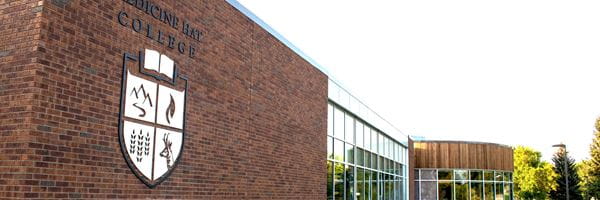C4i research increases production in honeybees
Master Beekeeper, Sheldon Hill, has been working with honeybees for over 30 years. What started as a summer job in Porcupine Plain, Saskatchewan, turned into an interest in learning about bees. Now, a local producer and co-owner of Sweet Pure Honey, Hill is working with Medicine Hat College’s (MHC) Centre for Innovation (C4i) to advance the way beekeepers approach their work.Through his research, Hill is already discovering significant results that may have profound impacts on the commercial honeybee industry. “I'm seeing my hive getting to a higher population and producing more honey, and this seemed to give me those answers,” says Hill.
“We saw 40% more brood before honey flow and over 70% greater production during honey flow. Those are significant, significant amounts.”
The current state of honeybees
As a producer, Hill noticed a variety of challenges that are affecting the production of honey during peak season.
“The honey industry has been having a very tough go in the last five to ten years, especially the last two. High losses in hives, high production costs, and lower production of honey. As a producer, I want to see if I can help.”
According to Hill, the losses and decrease in honey production may be due to factors including pests, viruses, and increasing climate events that are affecting bees’ ability to survive. Declining average honey yields, and persistently low commodity prices are also causing a financial strain on producers.
“Hopefully through our research, we can start to eliminate stressors. Maybe viruses are more easily controlled if the hive's not constantly fighting to keep control of this temperature in their hive. Does that then mean that, they’re just generally healthier, therefore less susceptible to other things that are happening in their environment?”
 Reassessing hive design for producers
Reassessing hive design for producers
The idea for Hill’s research began with a question, challenging beekeepers’ current design of bee hives.
"I was studying winter insulation for bees - condensation hives - which mimic how bees naturally survive the winter in tree cavities," explains Hill. "I realized that we replicate this approach for winter, we don't apply the same thinking for summer. Could there be benefits for hives that we haven't yet discovered?"
During the summer months, current hive designs emphasize ventilation and airflow. This research aims to explore whether adding more insulation in the summer can enhance the bees' ability to regulate the temperature and humidity inside the hive. Improved control of these factors could lead to better brood development, increased honey production, and overall colony health.
“Basically, we're still using technology that was invented in the 1850’s, but up until recently we haven't much taken into consideration the effects of this artificial thing that we've created on the bees,” says Hill. ‘How does the colony in woodenware, with very little R value, compare to a structure where the insulating value of a natural cavity is much higher?”
He compares hive design to the idea of running an air conditioner in a house.
“If you had a well-insulated house and a poorly insulated house that are air conditioned, the air conditioner runs a lot more in the poorly insulated house. The bees are the ones air conditioning the space so they're working harder theoretically than the ones that are well-insulated.”
Support from MHC’s Centre for Innovation
In seeking support from C4i, Hill says he was provided the grant funding, credibility, and space needed to properly test and validate his idea. Moving forward, he hopes to continue his research, exploring other innovations in beekeeping equipment and practices that could benefit the industry.
 From left, Kate Schuler (C4i), Sheldon Hill, Chelsey Ehresman (C4i), Morgan Blair (Dean, MHC's School of Trades & Technology), and Loreto Mattioni (C4i), stand with the insulated hive design.
From left, Kate Schuler (C4i), Sheldon Hill, Chelsey Ehresman (C4i), Morgan Blair (Dean, MHC's School of Trades & Technology), and Loreto Mattioni (C4i), stand with the insulated hive design.
Chelsey Ehresman, the manager for C4i, adds she looks forward to expanding the project.
“Our goal at C4i is to support local innovators like Sheldon Hill by providing the space and resources needed to test ideas that make a real impact on our industries. This summer's project had some incredible results that we hope to explore further in upcoming research."
She thanks those already supporting the research and welcomes others working in beehive management to connect with C4i.
"Collaboration is core to who we are, and we deeply appreciate regional partners like Nichole Neubauer who generously open their lands to support our research. The ongoing engagement and commitment from the region has been truly exceptional."
With the project’s early success, honey from the project has been used by Medicine Hat College’s School of Business & Continuing Studies. Business students participating in the annual innovate tournament on Sept. 26th used the product as their mystery object, with the goal of creating a new business endeavor.
Work with C4i
Interested in working with C4i? Visit www.mhc.ab.ca/innovation.

